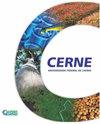Canopy recovery four years after logging: a management study in a southern brazilian secondary forest
IF 0.7
4区 农林科学
Q3 FORESTRY
引用次数: 3
Abstract
Background : Understanding forest dynamics after logging is essential to define forest management cycles and intensities. In secondary forest, especially in the Atlantic Forest Domain, these studies are still scarce. Monitoring of the canopy structure after tree harvesting can be performed by hemispherical photographs, where canopy opening is commonly analyzed. This study evaluated changes in canopy opening four years after tree harvesting in a secondary Atlantic Rainforest in southern Brazil. We used hemispherical photographs to determine the Canopy Openness (CO), Leaf Area Index (LAI), and Diffuse Fraction of Photosynthetically Active Absorbed Radiation (FAPAR dif ) in eleven permanent plots. Results: We found that harvesting resulted in a momentary increase in canopy opening and light availability in the understory. Four years after harvesting, CO, LAI and FAPAR dif recovered or even exceeded the original values of the forest. We observed a significant correlation between CO and number of trees harvested with DBH > 30 cm. Weak correlations were found between these canopy related variables and the logging intensity. Conclusion: In conclusion, we recognized that changes of CO, LAI and FAPAR dif after timber harvesting presented short duration. This indicates that the applied logging intensities, 21.8 to 51.1% of the total basal area, did not exceed the resilience of the forest canopy and it’s recovering four years later. However, additional studies should be carried out to observe vegetation dynamics, such as species composition, vertical structure, productivity and community stability, in order to improve management schemes of secondary stands in the Atlantic Forest.采伐四年后的冠层恢复:巴西南部次生林的管理研究
背景:了解采伐后的森林动态对于确定森林经营周期和强度至关重要。在次生林中,特别是在大西洋森林域,这些研究仍然很少。树木采伐后的树冠结构监测可以通过半球形照片进行,其中通常分析树冠开口。本研究评估了巴西南部大西洋次级雨林树木采伐四年后树冠开口的变化。我们利用半球面照片测定了11个永久样地的冠层开度(CO)、叶面积指数(LAI)和光合有效吸收辐射漫射分数(FAPAR dif)。结果:采伐导致林下林冠开度和光照有效性瞬间增加。采伐4年后,CO、LAI和FAPAR均恢复甚至超过了森林的原始值。我们观察到CO与胸径bb0 ~ 30cm采伐的树木数量之间存在显著的相关关系。林冠相关变量与采伐强度呈弱相关。结论:综上所述,我们认识到木材采伐后CO、LAI和FAPAR差异的变化呈短时间变化。表明采伐强度(21.8% ~ 51.1%)未超过林冠恢复力,4年后林冠恢复力正在恢复。但是,为了改进大西洋森林次生林分的管理办法,还应进行更多的研究,观察植被动态,如物种组成、垂直结构、生产力和群落稳定性。
本文章由计算机程序翻译,如有差异,请以英文原文为准。
求助全文
约1分钟内获得全文
求助全文
来源期刊

Cerne
农林科学-林学
CiteScore
1.60
自引率
0.00%
发文量
2
审稿时长
6-12 weeks
期刊介绍:
Cerne is a journal edited by the Federal University of Lavras, Minas Gerais state, Brazil, which quarterly publishes original articles that represent relevant contribution to Forestry Science development (Forest ecology, Forest Management, Silviculture, Technology of Forest Products).
 求助内容:
求助内容: 应助结果提醒方式:
应助结果提醒方式:


